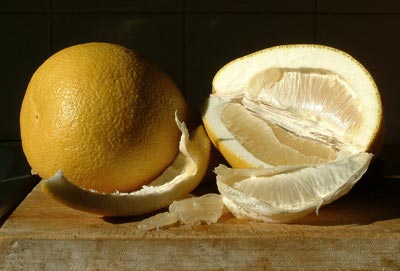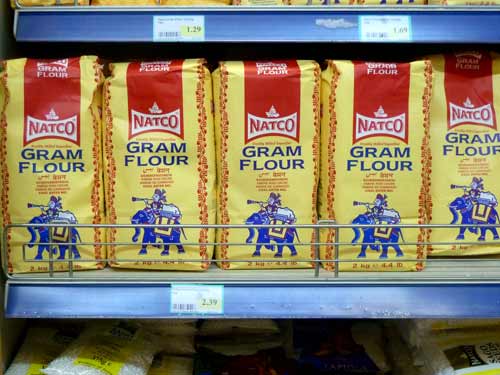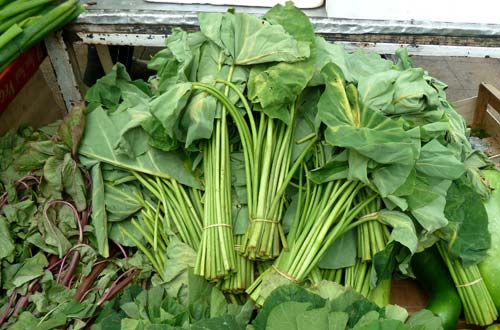
Pomelo. A citrus fruit similar in appearance to a grapefruit with one slightly pointed end. Once the thick skin is peeled, the segments need to have the tough leathery coating pulled away. Inside, the flesh can be deliciously sweet and juicy. It is better left for a few days after picking before it is eaten. There are pink and white versions. Is sometimes used in salads and savoury dishes.

Papaya. There is great discussion about the difference between papaya and paw paw or papaw. Essentially, they are all the same thing. It just depends where you are. The size of a large avocado, it has soft-textured, fragrant, apricot-coloured flesh with small black seeds which must be stripped out. It is a great breakfast fruit. If you have an unripe papaya which you wish to ripen overnight, pierce it with a sharp knife several times. It should be cut lengthways as this facilitates the removal of the seeds.

Papaya. There is great discussion about the difference between papaya and paw paw or papaw. Essentially, they are all the same thing. It just depends where you are. The size of a large avocado, it has soft-textured, fragrant, apricot-coloured flesh with small black seeds which must be stripped out. It is a great breakfast fruit. If you have an unripe papaya which you wish to ripen overnight, pierce it with a sharp knife several times. It should be cut lengthways as this facilitates the removal of the seeds.
A variety of the lablab bean which resembles a large pea pod, which produce dried brown beans with a white stripe.

Gram flour. The fine, pale yellow chickpea (US: garbanzo bean) flour made from channa dhal (the ones which resemble yellow split lentils). It is used to make pakoras and for binding dishes such as kebabs as well as making excellent batter.
A wide-mouthed, deep, flat-bottomed pot made from tinned brass. It has a well-fitting cover but no handles. It is used for 'sealed pot' curries or dum, heating milk, boiling water, cooking rice and generally for any cooking over flame.

Taro leaves. Colocasia leaves. Taro is a name used to cover many root crops grown in tropical regions, most commonly Colocassia esculenta. The leaves come from plants cultivated in warm climates both for their leaves and tuberous, potato-like roots, or corms. The roots, the flesh of which may vary from white to pink, have a delicate flavour and can be peeled and boiled, roasted, mashed, fried or included in a stew and look like a pointed swede, often with a ridged surface and protruding roots, with hairy beige or brown skin. They may weigh as much as 2 kg (4¼ lb). The leaves are large and floppy, fan-like and used as a vegetable or in soups. Some varieties of taro grow extra corms which bud on the main corms, or dasheens. These "buds" are known as eddos, particularly in the West Indies. Taro is a good source of high-grade protein. Whole taros with the skin intact are preferable to those that come peeled.